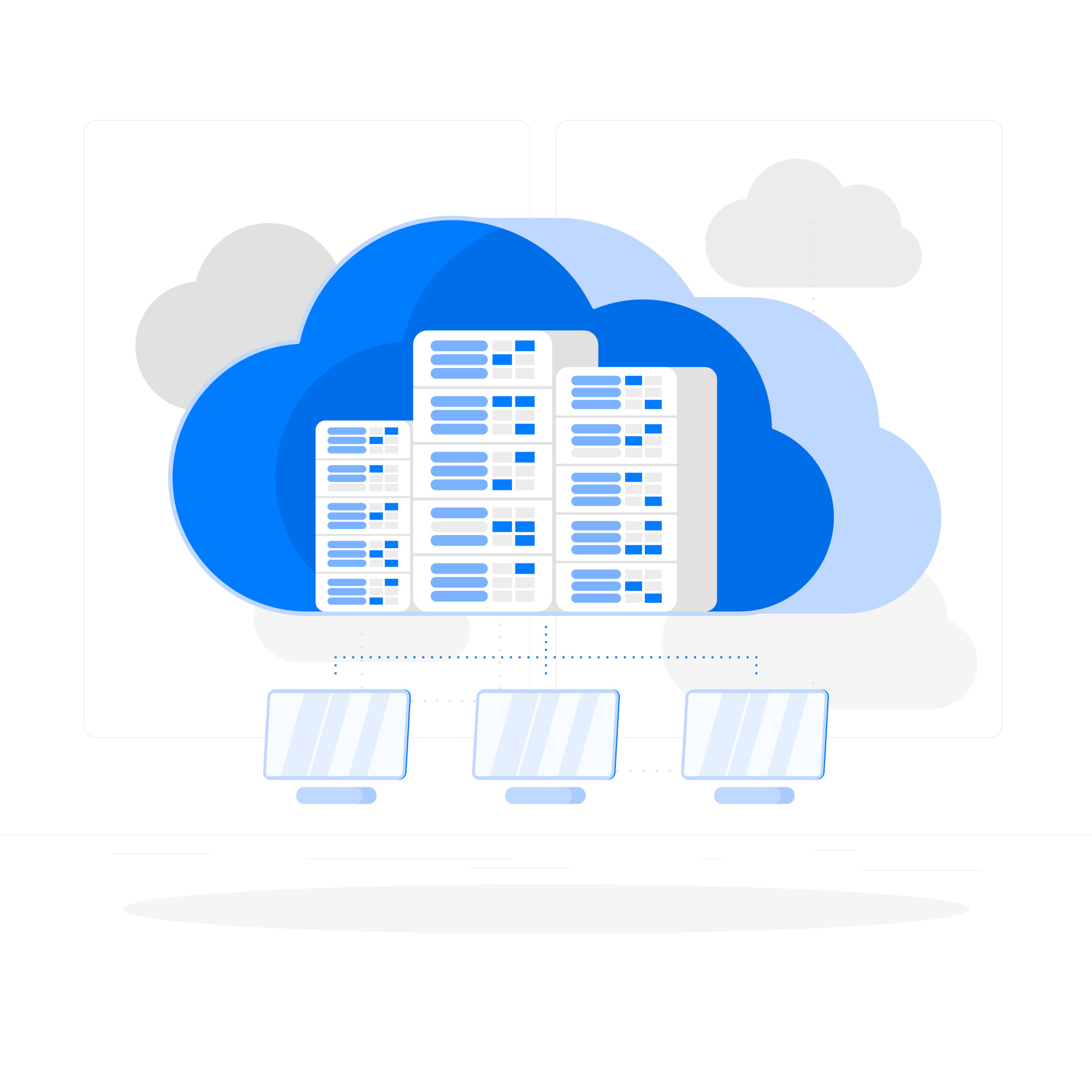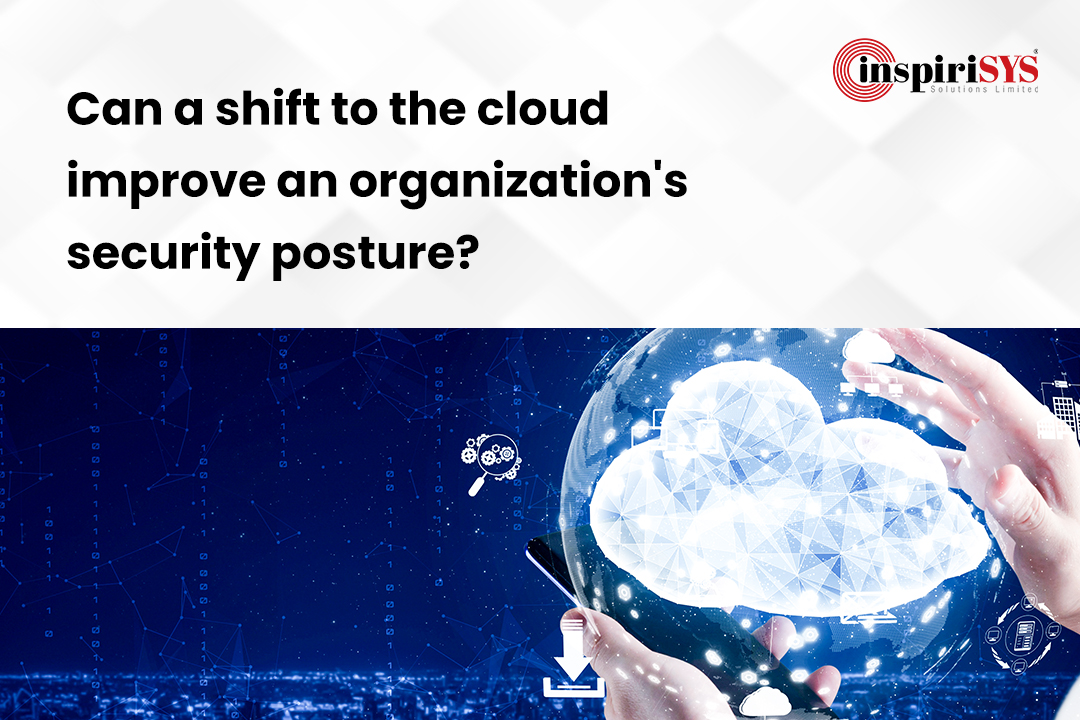There has been a phenomenal shift towards companies deploying their applications in the cloud for a decade or more. Software-as-a-Service (SaaS) has become common terminology. Cloud-based server instances from Amazon Web Services or Microsoft Azure have transformed the way we build IT infrastructure for businesses of any size.
The Cloud can simplify the management of your applications and services while saving money, providing flexibility end to end. The harsh reality is that most decision-makers focus on these benefits that the cloud provides but lose sight that a shift to the cloud changes their infrastructure, technology and most importantly their security posture.
“The cloud lowers costs, says a recent report by the Information Technology & Innovation Foundation (ITIF). "It creates technical and business agility, and enables innovation and digital transformation."
There is no doubt that cloud computing is a powerful technology. It has broken into the mainstream since its launch in 2006. It didn’t take more than a decade for that to happen.
Cloud adoption isn’t slowing down

The adoption of the cloud has been growing by leaps and bounds, year over year. According to a report by Marketsandmarkets, “The public cloud service market is expected to reach $623.3 billion by 2023 worldwide.”
That isn’t surprising when more and more businesses are looking outside their IT for solutions to help enhance agility, optimize resources and cut costs.
What causes cloud hesitancy?
The studies above and several others show that organizations are rapidly embracing the cloud and its spectacular benefits. However, many organizations are still hesitant to make the move to the cloud. You may wonder, why. The primary reason is security posture. It is a misconception in the physical security industry that closed networks and on-premises systems have better security.
There are several in the industry that perceive connecting to the cloud as a source of vulnerability that could put corporate data, apps and networks at risk. This belief is unfounded. In this blog, we will discuss what security posture means for an organization, and how cloud service providers can help improve it.
What is an organization's security posture and why is it important?
The security posture of a company is important - it has a direct relationship with organizational cybersecurity risk. When security posture improves, cybersecurity risk decreases inversely.
Cybersecurity risk and an organization's security posture
 The probability of exposure or loss resulting from cyber attacks, data breaches and other cyber threats is known as cybersecurity risk. A better, broader definition is the potential loss or harm to the IT infrastructure.
The probability of exposure or loss resulting from cyber attacks, data breaches and other cyber threats is known as cybersecurity risk. A better, broader definition is the potential loss or harm to the IT infrastructure.
Ensuring data privacy is now more important than ever. It's driven by general data protection laws like GDPR, LGPD, PIPEDA and CCPA. Industry-specific regulations like GLBA, FISMA, CPS 234, the NYDFS Cybersecurity Regulation and HIPAA make it doubly so. This makes reducing cybersecurity risk a high-level priority.
The regulations clearly outline what data has to be protected at any cost, barring which there can be legal and regulatory repercussions. Information such as personally identifiable information, protected health information and sensitive data needs to be secured. These comprehensive regulations suggest stringent cybersecurity controls and tools, such as encryption, access control, or zero-trust security.
Organizations need to get into a cadence of monitoring, maintaining and improving their cybersecurity posture regularly. With cybercriminals constantly on the prowl to find innovative and stealthy ways to exploit the most sophisticated IT cybersecurity measures, it is foolish not to.
Take the example of the WannaCry ransomware worm. It exploited a zero-day vulnerability in the Windows operating system to spread across several organizations’ and company’s IT infrastructure. Despite the fact that in the end, this vulnerability was quickly fixed, poor incident response planning and slow patching allowed the attack to continue to spread in the first place. Something that could have been prevented.
Traditional cybersecurity risk assessments are a great way to identify cybersecurity risks but continuous monitoring is essential to uncover the gaps in your security posture.
What does an organization's security posture entail?
The collective cybersecurity status of all software, hardware, services, networks, information, vendors and service providers is what defines an enterprise’s security posture or cybersecurity posture.
It encompasses overall cybersecurity commonly called InfoSec, along with data security, network security, penetration testing, security awareness training to prevent social engineering attacks, vendor risk management, vulnerability management and data breach prevention.
In collaboration with the IT security team at an organization, these cybersecurity strategies and tools are engineered to protect against security threats, prevent variegated malware, cybercrime and stop the theft of a company’s valuable IP or intellectual property.
The primary way of arriving at a company's cybersecurity posture is through an audit and cyber risk assessment.
Your on-premises systems are not as secure as you think
Most organizations use the same security tools, more or less. Whether it’s an IT team securing a server or system, or cloud providers protecting its infrastructure, the security tools are almost the same. With these tools, anyone can implement multiple layers of security and reinforce confidentiality, availability and integrity. Solutions such as firewalls, intrusion detection systems, multi-factor authentication and antivirus software are commonly used.
The reality is that organizations lack the tools, expertise, or money to build and maintain infrastructure with the required level of security and compliance. This leaves networks and on-premises systems vulnerable to cyberattacks.
The sorry episode of the WannaCry and Petya Ransomware attacks comes to mind. These vulnerabilities can be exploited with catastrophic results with far-reaching effects. As mentioned earlier, WannaCry malware exploited vulnerabilities in the Microsoft Windows operating system and quickly spread to other computers in the network.
Even though Microsoft patched this vulnerability quickly, those who were not aware and didn’t update were left vulnerable. The result? Within a day of the attack, over 200,000 systems around the world were infected.
How the cloud can help improve an organization's security posture
Organizations have taken several steps towards improving cybersecurity. However, the harsh reality is that it isn’t enough. Cyber-breaches such as SolarWinds, meat giant JBS and Colonial Pipeline are proof that these steps have not succeeded yet.
The underlying assumption in all these previous efforts was that we can educate and train organizations on how to secure themselves. The fact is that most organizations lack the requisite resources, the skill-set and incentives to do this on their own.
This is a big challenge for companies, far and wide. Especially those providing public-facing services such as banking, energy and transportation - critical infrastructure. Over a decade of efforts have shown that trying to get every company to do all the things needed to become secure isn’t practical and doesn’t work. It is hard to scale up security with this approach.
There is a better way to prevent these cyber security risks.
Cloud scale security
 Cloud platforms can provide advanced security at an enormous scale. In the same way, organizations rely on specialist providers to build infrastructure, the cloud provides exponentially better cybersecurity for your organization. The cloud is not a panacea for your cybersecurity woes but can substantially improve an organization’s cybersecurity posture.
Cloud platforms can provide advanced security at an enormous scale. In the same way, organizations rely on specialist providers to build infrastructure, the cloud provides exponentially better cybersecurity for your organization. The cloud is not a panacea for your cybersecurity woes but can substantially improve an organization’s cybersecurity posture.
Cloud providers take up the responsibility for protecting the IT infrastructure such as networks, data centers, and storage on themselves. They secure and manage all the software infrastructure like the operating systems and databases end to end. Most of the world’s security-conscious enterprises take advantage of cloud security. This includes companies such as banks and financial institutions, eCommerce giants and even law enforcement agencies such as the FBI.
Here’s how cloud platforms provide better security
Layers of information security
For most companies, it is complex and costly to keep systems safe from threats. It takes dedicated resources and budgets to do it well. This is where cloud providers have an inherent advantage. They can use economies of scale. At a massive scale, they can reduce the unit cost of providing high levels of security for their infrastructure.
The resources invested in building and maintaining a highly secure cloud platform can benefit millions of customers who can take advantage of multiple layers of security. They would not have been able to put all this in place by themselves at such an enormous scale.
Cloud providers have a strong incentive to provide robust security. Imagine a breach or downtime for a cloud platform. It can have tremendous financial and reputational costs that will hit right at the heart of its business model. This is one of the primary reasons they have built fault-tolerant architectures with independent regions and availability zones across the world that are redundant. The cloud is resilient, outages occur but there are back-ups for and easy recovery is a given.
In addition, cloud providers have a much smaller attack surface. This enables customers to focus on their data and apps that are business and mission-critical without the overhead of managing security.
Cybersecure by design
The cloud has security built-in by design. It is woven into the fabric of the platform and its services including zero-trust through identity and access management, multi-factor authentication, encryption, network segmentation, logging, and continuous monitoring. It provides common development, deployment, and change management tools as part of the package.
Most cloud platforms integrate easily with on-premises infrastructure at companies in a “hybrid” approach with unmatched security. In addition, the cloud automates and manages security at scale by detecting, responding, mitigating damage and recovery.
System updates and patches
Remember how vulnerabilities are the gateway to exploitation? Making sure IT infrastructure is always up to date while grappling to minimise the risk needs constant effort. The cyber threat landscape is constantly evolving. Vulnerabilities can be quickly identified and fixed through software updates. In reality, updating software is time-consuming. When companies are faced with budget constraints, this is a task that gets ignored.
The biggest benefit of using a cloud platform is that system updates are taken care of by the cloud provider itself. The latest patches and fixes are applied as and when they are released, ensuring systems are protected against vulnerabilities.
Enterprise-grade incident response
Top-tier cloud providers use stringent security measures for their infrastructures, using a global incident response team that works 24/7 to mitigate attacks.
Security is woven into the cloud platform from the ground up, including mandatory security requirements into every process. Popular cloud providers go out of their way to comply with international and industry-specific compliance standards. In addition, they participate in rigorous third-party audits which test and verify the platform’s cybersecurity.
Strict policies to prevent unauthorized access
The physical security of your infrastructure plays an important role in your security posture. Cloud service providers mitigate against internal threats by having safely guarded physical security in place. From the policies and processes to technologies they deploy, cloud providers build infrastructure with high levels of physical security. They implement robust incident response strategies. Whatever the nature of the cyber security breach, it is promptly detected and immediately mitigated.

Improve your security posture with cloud services from Inspirisys
When it comes to cyber security, organizations are finding it challenging to keep pace with the onslaught of new cybersecurity threats. Transferring the responsibility and risk over to cloud service providers is better as they are equipped to keep them secure. At ISL, we endeavor to provide you with the best Cloud services that enhance your business and your security posture. Get in touch with us for more on our Cloud Service offering.







